How to Bond With Your Dog (5 Concrete Tips)
- Anja Boecker
- Updated: 2023-12-15
How strong is the bond between you and your dog? An inseparable bond makes living together even more enjoyable. In this article, we will show you how to build a better relationship and what mistakes to avoid.
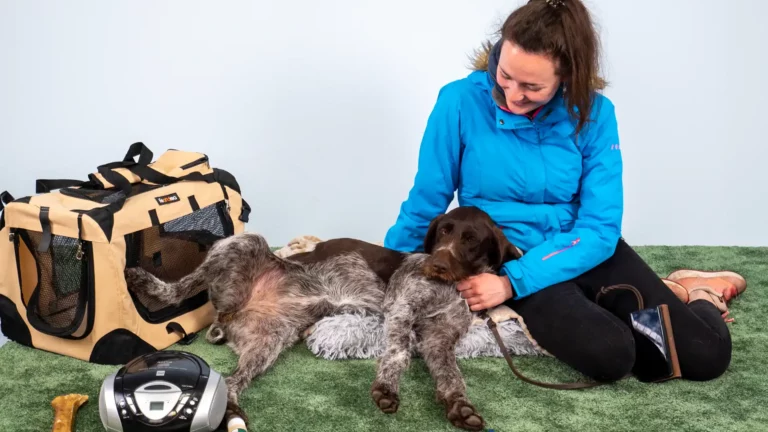
Why a Strong Bond Is So Important
The bond with your dog is a very special one that shapes communication and your entire life together. When this bond is missing, it can lead to challenges in training and behavior. A dog can quickly be labeled as difficult when all it needs is the right bond.
The relationship between you and your dog should be one of affection and mutual trust. This will strengthen the bond and make living together easier.
But a strong bond is also balm for the soul and gives you the feeling that you can communicate with your dog on a level playing field. It's not for nothing that dogs and their owners are often referred to as a "great team".
While a strong bond with your furry friend makes you feel good, your dog responds with a love of learning and motivation. Building a good bond is a win-win situation.
Building a strong bond with your dog is not only an enrichment to your life, but also essential to your dog's emotional well-being.
The Importance of a Deep Connection
A strong bond with your dog has many benefits: it promotes trust, security and mutual understanding. A dog that feels connected to its owner is often more balanced, happier, and more responsive to training and instruction. However, this bond does not develop overnight - it is the result of time, patience, empathy, and consistent positive interaction.
Key Components of an Unbreakable Bond
- Understanding and empathy: The ability to understand and respond to the dog's needs and feelings.
- Quality time: Time spent together, whether playing, training, or just relaxing.
Communication and - Training: Clear, positive communication and effective training strengthen mutual understanding.
Trust and - Safety: An environment where the dog feels safe and understood is the foundation for a strong bond.
Respect and - Mindfulness: Recognize and respect your dog's individuality and boundaries.
How Do I Recognize a Good Bond?
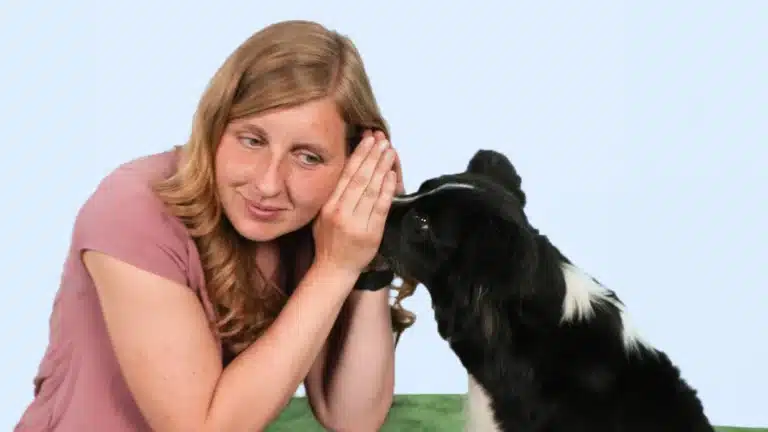
- Does your dog seek you out and feel safe with you?
- Does he never leave your side, even off the leash, and does he never take his eyes off you when he goes for a walk?
- Is your dog completely relaxed at home and comfortable being left alone for several hours at a time?
Then you are very lucky and have a strong bond with your dog! Your dog trusts you blindly and can rely on you at all times. In return, he will thank you with physical contact or show himself to be highly motivated and eager to learn.
If you answered "no" to some or all of these questions, your bond with your dog is not yet that strong. But with a little practice, you too will become a "good team".
How Does a Dog Show Affection?
Dogs are not only loyal companions, but also expressive creatures that show their love in many different ways. But how exactly does a dog express affection? Learn more about the affectionate gestures and behaviors your dog uses to show you his love and trust.
Seek Physical Contact
- Cuddle and snuggle: Many dogs seek the physical closeness of their humans by leaning against them, climbing onto their laps, or lying down next to them for a cuddle.
- Licking and nose poking: Gentle licking or nudging with the nose are common signs of affection and attachment.
Joyful Greetings
- Tail wagging and jumping: When your dog comes to you wagging his tail and jumping with joy, he is showing his enthusiasm and love.
- Excited whimpering: Some dogs express their joy at seeing you by whining or squealing excitedly.
Maintain Eye Contact
- Deep eye contact: Long, relaxed eye contact can be a sign of trust and deep connection. It is often referred to as the "love look".
Follow You and Seek Your Proximity
- Always by your side: Dogs that follow you from room to room or always want to be near you are showing their affection and need to be near you.
Confide in You
- Show your belly: When your dog rolls over and shows you his belly, it is a sign of great trust and affection.
- Relax close to you: A dog that relaxes and sleeps near you feels safe and loved.
Protection and Care
- Protective behavior: Some dogs show their love by keeping a watchful eye on you or by wanting to protect you in certain situations.
Every dog is unique and shows love in different ways. By paying attention to and appreciating these loving gestures, you can further strengthen the deep bond and trust between you and your dog.
How to Strengthen Your Bond
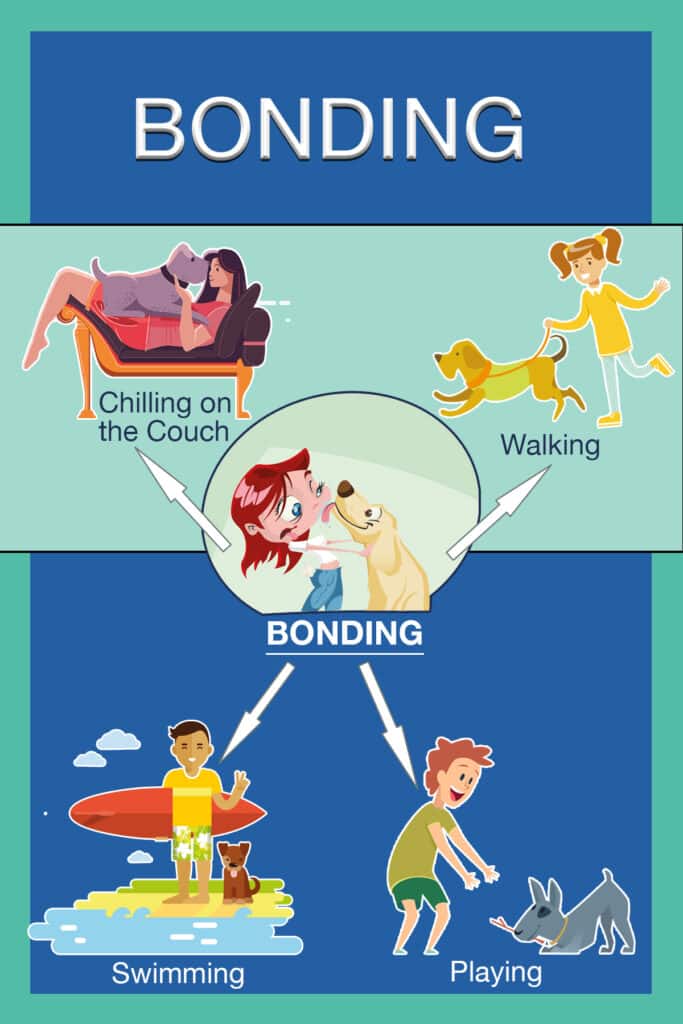
Bonding with your dog is not always easy. But with a little practice and consistency, it's doable for everyone. Your relationship should be based on four principles:
1. Affection and Love
Like humans, animals need a certain amount of affection and love. This does not necessarily mean physical closeness such as cuddling, but rather frequent eye contact, loving words or friendly body language. Even feeding can be a form of affection, if it is in the form of treats or if your dog earns his food by playing a fun game.
2. Patience and Understanding
Patience is a virtue and, along with understanding, should be an integral part of your relationship with your dog. If your dog does not immediately obey a command during a learning phase, be patient and give him enough time. Puppies, in particular, have difficulty understanding your words right away and then fail to carry them out. Just keep practicing and try to be understanding of your dog's extended learning period.
3. Attention
Dogs have a much finer sense of their environment and especially of the moods of other creatures. If you want to strengthen your bond with your dog, you should train your own attention and meet your dog at his level of communication. This will help you read his body language and respond to his needs. For example, if he tires easily during training, he may be overwhelmed and you should reduce the workload.
4. Safety and Security
Unfamiliar situations are a great challenge for any dog. In order to master them, he needs the security of his human. A dog that is literally "forced" to do things can never develop a confident nature and will always react to certain situations with fear. It is better to gently encourage the dog and introduce him to his challenges with lots of praise.
Care and Health
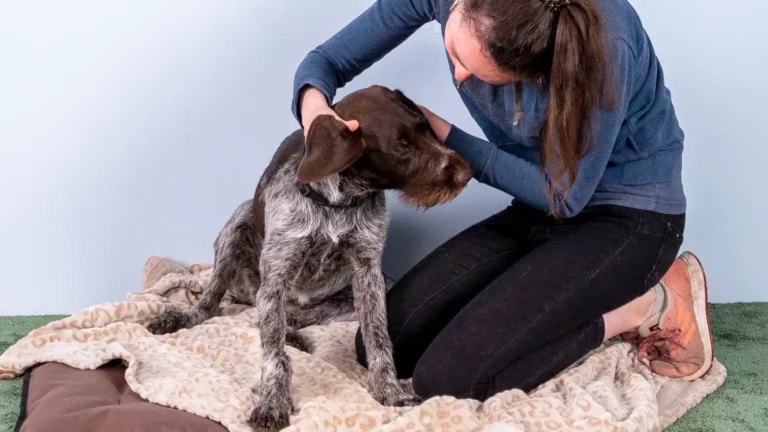
Your dog's care and health are essential aspects of a loving and responsible relationship. Taking care of your dog's health is a way to show your love and strengthen your bond. In this section, you will learn how to optimize your dog's care and health.
Importance of Nursing and Health Care
- A sign of love and care: Regular grooming shows your dog that you care about his well-being.
- Prevention and early detection: Good preventive health care helps detect and treat disease early.
Daily Care Tips
- Coat care: Regular brushing keeps the coat clean and healthy and allows for physical contact and bonding.
- Dental care: Dental care is important to prevent dental problems and associated health risks.
- Paw care: Check your dog's paws regularly for injuries or foreign objects and keep claws short.
Health Care and Nutrition
- Regular visits to the vet: Make sure you get regular health checks and vaccinations.
- Balanced diet: A healthy and balanced diet is important for your dog's health and well-being.
- Exercise and fitness: Make sure your dog gets enough exercise to keep him physically fit and mentally balanced.
Consider Age and Breed Specifics
- Adaptation to age: Consider your dog's special needs at different stages of life.
- Breed-specific features: Learn about breed-specific health issues and care requirements.
Taking care of your dog's grooming and health is a tangible way to show your love and affection. Good grooming and health care not only contributes to your dog's physical well-being, but also to his emotional well-being and strengthens your relationship.
What Requirements Are Important?
In order to strengthen the bond with your dog, a number of conditions must be met. These include the way you organize your daily life and your personality.
Empathy
Every living creature has its own needs. Get to know them better and be prepared to meet them! Even if you have to put your own needs aside at first. If you show consideration for your dog, you will quickly win his love and trust. Show empathy: Try to see the world from your dog's point of view. Understanding his feelings and reactions will help you respond to his needs. Recognize individual needs. Every dog is unique. Pay attention to your dog's preferences, fears, and behaviors to better understand his behavior and needs.
Fixed Daily Routine
Dogs like to follow set routines in their daily lives. They give him security and protect him from sensory overload. A dog that is fed at set times is less restless. The same goes for regular walks, training, and playtime at certain times of the day. A relaxed dog is better able to focus on its human.
Reliability
In addition to a set routine, your dog needs to feel that he can always count on you. Trust is built on reliability.
Stability
Your dog senses nothing more than your own insecurity. Only if you are confident and consistent can you give him security, reliability and trust.
Time
Every relationship takes time, including the one between you and your dog. If you don't give it time, you've lost from the start. Especially if you're just getting to know each other, don't demand too much and let things take their course. It's best to take a vacation during the first few weeks. Avoid time-consuming commitments, hobbies, or visits to friends and family during this time.
Recognizing emotional needs
Changes in behavior may indicate emotional needs. Watch for signs of stress, anxiety, or excessive demands. Provide a safe and loving environment where the dog feels secure. Regular attention and reassurance are important.
Meeting physical needs
Make sure your dog gets regular veterinary checkups, vaccinations, and a balanced diet. Also, make sure your dog gets enough exercise. Regular walks, playtime and physical activity are important for his health and well-being. Provide a comfortable place to sleep and a pleasant environment that meets your dog's needs. Pay attention to your dog's nonverbal cues. Body language, eye contact, and vocalizations can tell you how your dog is feeling. Be willing to adjust your habits and behavior to meet your dog's needs. Use praise and rewards to reinforce positive behavior and build your dog's confidence.
Quality Time and Shared Activities
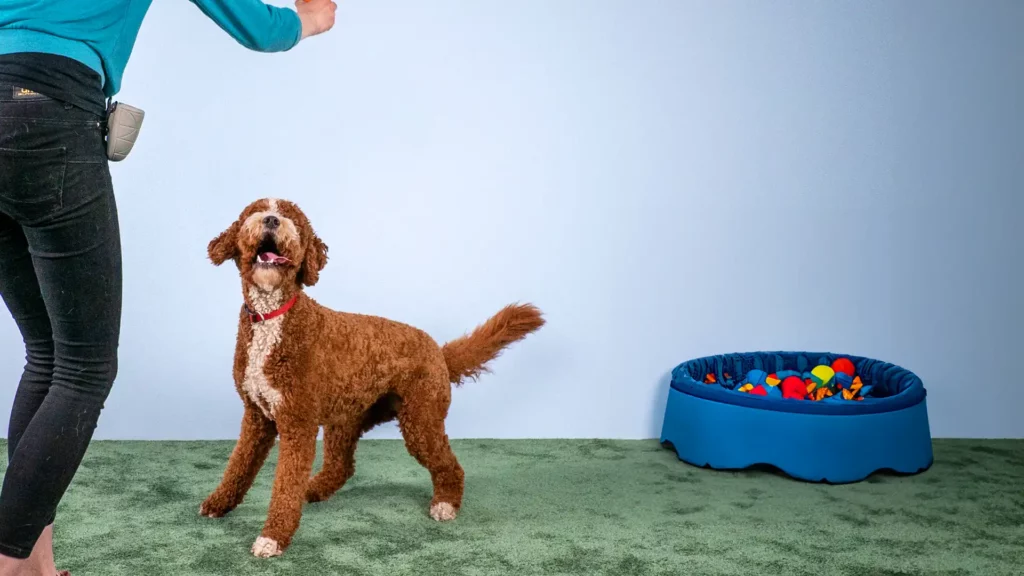
Spending time with your dog is more than a pastime - it is the foundation of your relationship. These moments of closeness and shared experiences strengthen the bond between you and your loyal companion. In this section, we'll look at how you can make the most of your time with your dog and deepen your relationship through shared activities.
Shared activities build trust and a sense of togetherness. They are opportunities to share love and joy. Through shared experiences, you will learn to better understand your dog's behavior and signals.
Ideas for Joint Activities
- Walks in the countryside: Use walks to explore the world together. Different environments offer new stimuli and adventures.
- Playing times: Games like fetch, hide-and-seek, and tug-of-war are not only fun, but they also strengthen bonds.
- Training time: Use training sequences as an opportunity to have fun together while practicing important commands and tricks.
Creative Games and Training Activities
- Intelligence games: Encourage your dog's mental stimulation with brain teasers or puzzles.
- Agility training: Agility classes are a great way to exercise your dog's mind and body while having fun.
- Relaxation time: Not to be underestimated are the quiet moments of cuddling and relaxing when you are just together.
Tips for Enriching Activities
- Variety: Provide a variety of activities to avoid boredom and create new challenges.
- Observation: Be aware of your dog's reactions. Not every activity is appropriate for every dog.
- Positive reinforcement: Use praise and rewards to positively reinforce your dog's behavior during activities.
Activities together are an important part of your relationship. They are fun, promote health, and strengthen your understanding of each other. Make regular time for fun experiences with your dog - it's an investment that pays off in a deep and inseparable bond.
Promoting Independence
While a close bond with your dog is wonderful and rewarding, it is equally important to allow your dog independence and autonomy. A dog who is able to do things for himself develops more self-confidence and security.
Avoid separation anxiety. Dogs that learn to be alone are less likely to develop separation anxiety or over-dependency. So train your dog to be alone. Gradually get your furry friend used to being left alone for short periods of time. Start with a few minutes and slowly increase the time.
Encourage independent play. Offer toys and activities that your dog can do on his own, such as chew bones or educational games. Let your dog choose where to lie down or which toy to play with.
Maintain a balance between shared activities and times when your dog is on his own. Pay attention to and respect your dog's signals that he needs time to himself. Provide support and guidance rather than controlling or deciding everything for your dog.
Make sure your home is a safe place for your dog to move around and explore. When your dog does something independently, praise him to reinforce the behavior. Fostering independence is a process that takes time and patience.
Helping your dog develop independence and self-reliance will promote his well-being and self-confidence. A healthy balance between closeness and independence is essential for a harmonious and fulfilling relationship between you and your dog.
Why Doesn't My Dog Trust Me?
There are only two reasons why your dog may not trust you: either you have not been able to build trust with each other, or your dog has lost trust in you. The latter is the more difficult situation and can only be remedied through intensive trust training. On the other hand, it is easy to prevent your dog from losing trust in you.
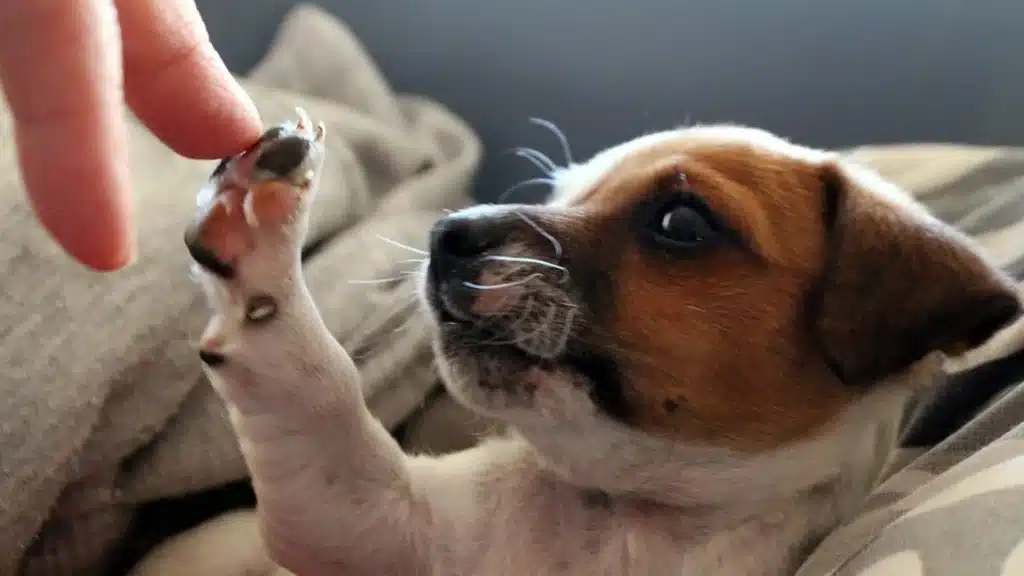
Common Mistakes and How to Avoid Them
Togetherness is Everything
Many dogs thrive in their environment and love to accompany their owners everywhere. But the fun often stops at the grocery store, large family gatherings, or crowded restaurants. It is better to leave the dog at home and give him some peace and quiet.
No Protection From Other Dogs
"The dogs will sort it out among themselves". A statement that has destroyed many a bond between dog and owner. Because when your dog trusts you, he puts his safety in your hands and expects you to protect him in dangerous situations. So if you notice that your dog prefers to avoid dog encounters, don't force it and keep your distance. Similarly, you should be able to get your dog out of a dog encounter by safely calling it off. In both cases, you will avoid escalation and provide protection and safety for your dog.
"I Am the Boss!"
Of course, by and large, you control your dog's life. However, you should always meet your dog at eye level and never look down on him. Just as the unpopular boss at work has an effect on you with his demands, you have the same effect on your dog with subordination rituals and punishments. Give your dog the chance to choose according to his needs and he will thank you with trust.
"My Dog Knows Exactly What I Mean."
If this sentence was preceded by a command that was not carried out, then the exact opposite is true. Don't get stressed or frustrated, because emotions don't help the situation. Not even if you repeat the command out loud several times in a row. It is better to communicate more clearly in the future, rewarding the dog for correct behavior and correcting it for misbehavior.
5 Tips on How to Actually Build the Bond
1. Rules for More Safety
For a strong bond, your dog needs a firm structure for everyday life, as well as clear rules. You should always be predictable to your dog so that he can follow your lead and feel safe. Inconsistency is out of the question! As soon as your dog realizes that you are constantly changing your mind, he will stop taking you seriously.
2. Tone of Voice and Body Language in Harmony
If you want to set limits for your dog, your body language and tone of voice must match. Your dog will not take a "no" seriously if you are sitting on the sofa looking disinterested. In this case, stand in front of your dog and make firm eye contact. Praise should always be sincere and never half-hearted.
3. Respect
Respect is the most important thing in the human-dog relationship. Always treat him lovingly and consider his needs. Give him enough rest after training and avoid overstimulation. Violence, tantrums, and emotional swings do not belong in your relationship! Respect your dog's boundaries. Do not force interaction if your dog shows signs of discomfort. Respect his boundaries and personal space.
4. Understand Dog Language
Always pay attention to what your dog is trying to tell you through his body language and respond accordingly. Through play and other activities, you can learn more about your dog's behavior and avoid misunderstandings.
5. Maintain a Sense of Accomplishment
We humans love success and build our entire consciousness and interpersonal relationships around it. The same is true for your dog and the experiences you share. When off-leash walks are successful, they are remembered positively for a long time.
Frequently Asked Questions
Most dogs bond with the person in their immediate environment who gives them the most attention. In a multi-person household, this is usually the person who feeds, plays with, and walks the dog.
The amount of time it takes for a dog to build trust with its owner depends on the dog and its history. It is usually easier for a puppy to gain trust because it is still completely dependent on its new owner for protection.
This process may take a little longer with an older dog. Especially if the dog has a troubled past and comes from a shelter. Violence and neglect shape the dog's behavior and cause trust in humans to dwindle. Patience is needed!
Many dogs from shelters hide at first and seem very withdrawn. But after five to seven days, most will suddenly come out of their "hiding place" on their own, and the foundation of trust has been laid. After that, it takes a few weeks, months, or even years for a solid bond to form.
It also depends on the dog's personality and the intensity and structure of your training. But when the time finally comes, you will definitely feel it!
To build a bond with a puppy, you should never base it on adult dogs. A puppy is still very individual in its behavior and will go through different stages of imprinting over time. Strictness and excessive demands are also out of place. If you are unsure, you can also seek advice from a puppy school. There, experienced trainers will be on hand to help and guide you along the way.
Bonding with a fearful dog can be difficult. But again, take your time and build trust slowly. This is the only way to lay the foundation for a strong bond. Again, you can get help from a dog school and use the services of a professional dog trainer. This will help you understand your dog's behavior and guide him safely through the challenges of everyday life.
The terms "attachment" and "relationship" are often used in the context of interpersonal or human-animal relationships and may overlap, but have different meanings:
Attachment refers to the emotional bond that develops between individuals. It is a deep sense of connection, often characterized by care, love, and trust. In animals, such as dogs, attachment is expressed through trust, attachment, and the search for closeness and protection with a particular person.
Relationship is a broad term that describes the way two or more people interact and relate to each other. It encompasses all interactions, behaviors, forms of communication, and dynamics between individuals. Relationships can be professional, friendly, familial or romantic in nature and are not necessarily characterized by a deep emotional connection.
In short, while 'attachment' focuses on the deep emotional bond that can develop between individuals, 'relationship' refers to the broader range of interactions and connections between them.
Patience, consistency, and positive reinforcement are the keys to gaining your dog's trust. Be consistent in your actions and routines to reassure the dog. Avoid loud noises and sudden movements. Move calmly and speak softly so as not to frighten the dog.
Reward desired behavior with treats, praise, or petting to create a positive association with your presence. Don't force your dog to interact with you. Pay attention to his body language and respect his cues when he needs space.
Don't expect him to trust you right away. Give your dog the time he needs to get used to you and build trust. Spend regular time with your dog playing, training, and petting to strengthen the bond.
- Spend time with him: Give your dog your undivided attention every day by playing, walking, or just relaxing together.
- Physical contact: Many dogs enjoy physical closeness. Stroking, cuddling, or gently massaging are good ways to show affection.
- Positive reinforcement: Reward your dog with treats, praise or toys to encourage good behavior and show your affection.
- Regular care: Regular grooming, such as brushing or bathing, shows affection and contributes to your dog's well-being.
- Spoken affection: Talk to your dog gently and lovingly. Even if he doesn't understand the words, the tone of your voice conveys your affection.
- Joint activities: Participate in activities your dog enjoys, such as outdoor play or training exercises, to share joy and affection.
- Attention: Listen and respond to your dog's needs to show him that you care about his well-being.
Conclusion
Building an inseparable bond with your dog is one of the most rewarding experiences you can have as a dog owner. This deep bond is based on mutual trust, understanding and love.
We have found that the cornerstones of such a bond are empathy for your dog's needs, quality time together, and effective communication.
Remember that every small gesture of care, whether it's during play, training, or just quiet moments, strengthens the bond with your dog. Respecting his individuality, responding to his needs, and creating a safe and loving environment are essential to fostering trust and security.
Building an inseparable bond is an ongoing process that requires patience, consistency, and above all, lots of love. Each dog is unique, and each bond will take its own special form.
The time and effort you invest in this relationship will be rewarded with an unparalleled bond and joy.
Remember, the love and bond you share with your dog not only enriches his life, it enriches yours. It's a journey that will help you both grow and provide countless moments of happiness.
Share Now:
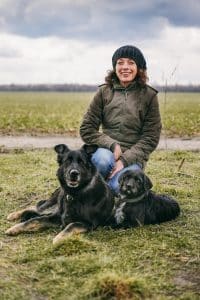
My name is Anja Boecker, and I am a certified dog trainer and behavior consultant. With these articles, I want to help you to understand your dog better and to build an inseparable bond.

